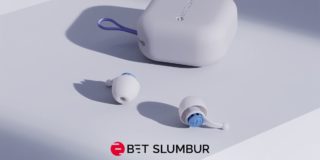A permission request letter is one where an individual, organization, or group is requesting permission to perform an act or obtain information. A Permission request letter for data collection for research is one where someone, such as a college student, is requesting data to complete research work. For instance, if someone is attending university and looking to collect research data, they’d address the letter to the registrar, requesting to have access to the data. Requesting data not only happens at the university level but concerns any situation where data collection requires a written letter requesting permission for said data.
When you are requesting permission for data from a university or other establishment, it’s good form to contact the institution itself to see what their protocol involves. For instance, some may require you to fill out a form, along with the letter. Once that’s established, it’s time to get down to writing the letter.
Some of you may be thinking, “why write a letter? Why not just ask for the data?” Well, first of all, the organization you are requesting from might have certain protocols in place. Secondly, when one makes a verbal request, there is no record. By composing a letter requesting data for research, your request is in writing and signed by you. Thus, no one can ever accuse you of breaching protocols, as some data might be listed as classified or sensitive. That being said, here are some basic elements you may wish to include in your letter, if applicable to your situation:
- Your full name
- The full name of the person responsible for handling the request for data
- Date requested
- Type of information requested
- Any relevant names
- The reason for the data
- How you will use the data
- Names of any institutions or individuals who will share the data
- Attach any documents, if applicable
How to Format a Request Letter for Data Collection for Research
First of all, know that a letter requesting permission for data usage is considered a formal document. As such, you’ll be using a professional tone, while keeping it brief and on target. It will be formatted using block-style, business letter formatting, with all sections starting at the left margin, each section single-spaced, with double spacing in between the sections. All margins should be set at one inch. Finally, use an easy to read font–nothing fancy. A font like Arial or Times New Roman with a size of 11 or 12, should suffice.
Sender’s information. Sender’s information refers to your mailing address and contact information. So, include your full name, mailing address and phone and/or email or website address. Make sure there are no typos, as you want to be available for questions should they need to contact you.
Date . The date you complete the letter, is the date which is used here.
Recipient’s Contact Information. First and foremost, always use the correct recipient here. The letter must be addressed to the person responsible for obtaining the data for you. Next, make sure there are no spelling errors, so it arrives at the point of contact.
Subject Line. It might seem a small and insignificant thing, but did you know that some people will toss a letter or email away if it doesn’t have a subject? To avoid this, state the subject, which is data collection for research.
Body Text. This type of letter has no predetermined length, as some requests may require more information than others. However, in general three sections can be used.
Section One. This is where you introduce yourself and your request. Here, you get the opportunity to show your good manners as you nicely make your request
Section Two. If you are required to add a reason for the data, then this is the section for that. Also, mention who else will have access to the data, what the data will be used for. For instance, if you’re planning on entering it in a medical journal, mention the name of the journal here. Also mention any attached documents here.
Section Three. In this section, you are to express your gratitude for their kind attention to your request. Include your contact information, stating that they can contact you whenever they need to make an inquiry or clarify the request.
Closing. Your closing seals the letter. Keep the closing formal and professional. If you use a two-word phrase, then just capitalize on the letter of the first word. Good closings are:
- Best regards
- Yours truly
- Sincerely yours
- Regards
Sample Permission Request Letter for Data Collection for Research
Here we have a sample permission request letter involving the collection of data for research purposes. Sample letters such as these serve as a good starting point for writing your letter, especially if you’ve very little experience in writing such letters.
(Senders full name
Mailing address
Phone number/email)
(Date Letter Signed)
(Recipient’s Full Name
Mailing Address
Phone Number/Email)
Subject: (Reason for Needing Data)
Dear Dr./Ms./Mr. (Name of Recipient and Title if Applicable)
This letter is in regards to (Reason for Requesting Data). I am (Name of Person Requesting Data), and currently work in the (Name of Business or Department). I am in charge of research and development, and am formerly requesting permission to access (Type of Data). We are currently collecting data for (Reason for Data), and were given your name from a former colleague of yours (Name of Colleague).
We intend to use the data collected, to assist in creating a (Reason for Data), and will be sharing it with (Name of person or organization), in accordance with your organizations protocols. We are also attaching a letter from (Name of sender) who recommended that I contact you for the data.
On behalf of myself and my research team, we heartily express our gratitude in examining our request for data. We assure you that all protocols will be followed, and privacy regulations adhered to. If you have any questions or concerns, my contact information is (Contact information).
Best regards
(Signed name)
(Printed name)

In summary, crafting the perfect request letter for data for research projects can be a complex affair. If it helps, always consider the option of jotting down notes of essential elements before you sit down to write. Making sure that all names, dates, locations are spelled properly and are correct. Remember to use block business style formatting, keep it brief, and use a professional tone. Complete the letter with a statement of gratitude and include your contact information. Cap off the entire process by carefully proofreading and editing the letter. Finally, take advantage of the sample letter as presented here, and let it guide you in composing a winning permission request letter.
Looking For Document Management System ?
Call Pursho @ 0731-6725516
Telegram Group One Must Follow :
For Startups: https://t.me/daily_business_reads




